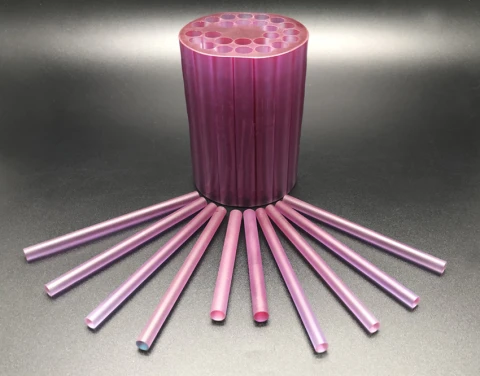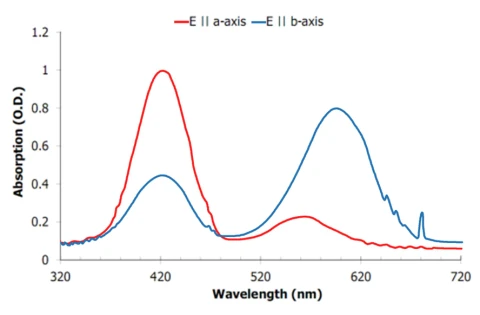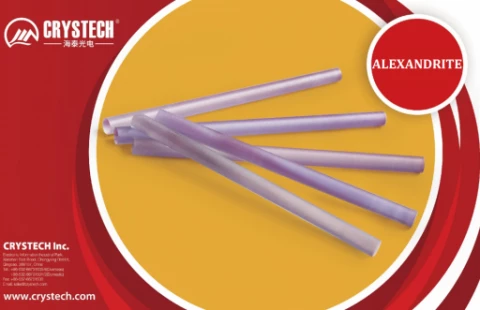Description
The Alexandrite Crystal, scientifically known as Chromium-doped beryllium aluminum oxide, is a premier laser gain material utilized in solid-state lasers. Grown using the Czochralski method, this crystal is renowned for its exceptional quality and monocrystalline form. With emission wavelengths typically ranging from 710 nm to 800 nm, Alexandrite is capable of producing broadly wavelength-tunable lasers. Most commonly, it operates at a wavelength of 755 nm, where the laser gain reaches its peak. This crystal is characterized by its anisotropic nature, meaning that its absorption and gain properties are significantly influenced by the polarization direction of the pump light. The material's strong birefringence facilitates the achievement of linearly polarized emission with minimal depolarization losses. Furthermore, Alexandrite's thermal shock resistance is five times greater than that of Nd:YAG, attributed to its exceptional mechanical and thermo-mechanical strength, as well as its thermo-optical properties. This robustness allows it to not only withstand elevated temperatures but potentially perform better under such conditions. As a result, pulsed Alexandrite lasers often exhibit enhanced performance at higher temperatures, accommodating very high pump powers. In dermatological applications, Alexandrite lasers play a crucial role. They are extensively used for hair removal, tattoo removal, and treating visible leg veins and pigmented lesions. The laser's light is preferentially absorbed by hair shafts, and the resultant heat damages the hair shafts and surrounding follicles, a process known as selective photothermolysis. By cooling the skin during treatment, damage to the epidermis is minimized. The shorter emission wavelength of Alexandrite lasers, compared to Nd:YAG lasers, is advantageous for removing finer hairs, although it poses a higher risk of skin damage in darker skin due to melanin absorption. High-intensity pulses from these lasers are typically applied to large skin areas, allowing for efficient treatment with relatively simple laser systems.
Alexandrite Crystal by CRYSTECH for Medical Applications
Specifications
| Type Of Crystal: | Other |
|---|---|
| Crystal Diameter: | 3 mm |
| Crystal Length: | 3 mm |
| AR Coating: | One side, Both sides, Uncoated |
| Emission Wavelengths: | 710 nm to 800 nm |
| Operating Wavelength: | 755 nm |
| Thermal Shock Resistance: | Five times that of Nd:YAG |
| Pump Pulse Energies: | Hundreds of joules or several kilojoules |
| Formula: | Cr3+:BeAl2O4 |
| Crystal Structure: | Orthorhombic |
| Unit Cell Dimensions: | 5.476 Å (a), 9.404 Å (b), 4.427 Å (c) |
| Thermal Expansion: | 5.9 (a), 6.1 (b), 6.7 (c) x10^-6 K^-1 |
Features
- High-Quality Alexandrite Crystal: Grown using the Czochralski method, ensuring monocrystalline form with exceptional crystal quality.
- Broad Wavelength Tunability: Emission wavelengths range between 710 nm and 800 nm, with optimal operation at 755 nm for maximum laser gain.
- Excellent Polarization Properties: Anisotropic nature allows for linearly polarized emission with low depolarization losses.
- Superior Thermal Shock Resistance: Five times the resistance of Nd:YAG due to high mechanical and thermo-mechanical strength.
- High Pump Power Tolerance: Capable of withstanding very high pump powers, with pump pulse energies in the hundreds of joules or several kilojoules.
- Optimal for Dermatology Applications: Effective for hair removal, tattoo removal, and treatment of leg veins and pigmented lesions through selective photothermolysis.
- Efficient Skin Treatment: High pulse energy and average power reduce treatment time, with minimized epidermal damage through skin cooling.
- Versatile Applications: Suitable for dermatology, spectroscopy, atmospheric lidar, and various laser types including Long Pulse, Q-switched, and Picosecond 755 nm lasers.
- Comprehensive In-House Production: Crystal boules growth, cutting, polishing, and coating all performed in-house for quality assurance.
- Customizable Rod Dimensions: Available in diameters from 3mm to 10mm and lengths up to 153mm, with flat or curved ends.
- High Damage Threshold Coating: Ensures durability and longevity of the crystal.
- Competitive Advantages: Excellent quality, competitive pricing, fast delivery, and superior customer service.
- Physical Specifications: Orthorhombic crystal structure with unit cell dimensions of 5.476 Å (a), 9.404 Å (b), and 4.427 Å (c). Thermal expansion coefficients are 5.9, 6.1, and 6.7 x10-6∙K-1 for axes a, b, and c respectively.
Applications
- Dermatology
- Hair removal
- Tattoo removal
- Treatment of visible leg veins
- Treatment of pigmented lesions
- Spectroscopy
- Atmospheric Lidar, etc.
- Long Pulse, Q-switched or Picosecond 755nm Lasers
Frequently Asked Questions
How is Alexandrite produced?
What are the advantages of using Alexandrite Laser Crystal?
What are the applications of Alexandrite Laser Crystal?
What is Alexandrite Laser Crystal used for?
What is the emission wavelength of Alexandrite?
Similar Products
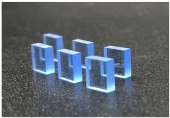
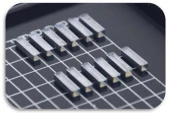
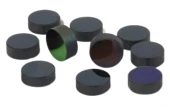
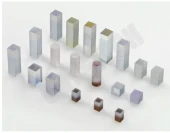
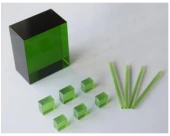
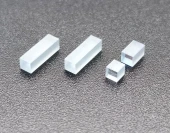


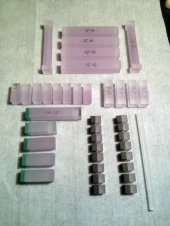
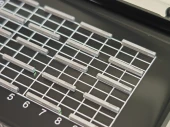
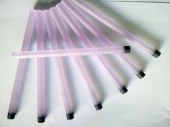
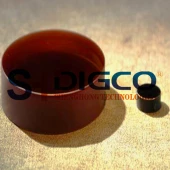
Your inquiry has been received.
Create an account by adding a password
Why create an account?
- Auto-complete inquiry forms
- View and manage all your past messages
- Save products to your favorites
- Close your account anytime — no hassle
